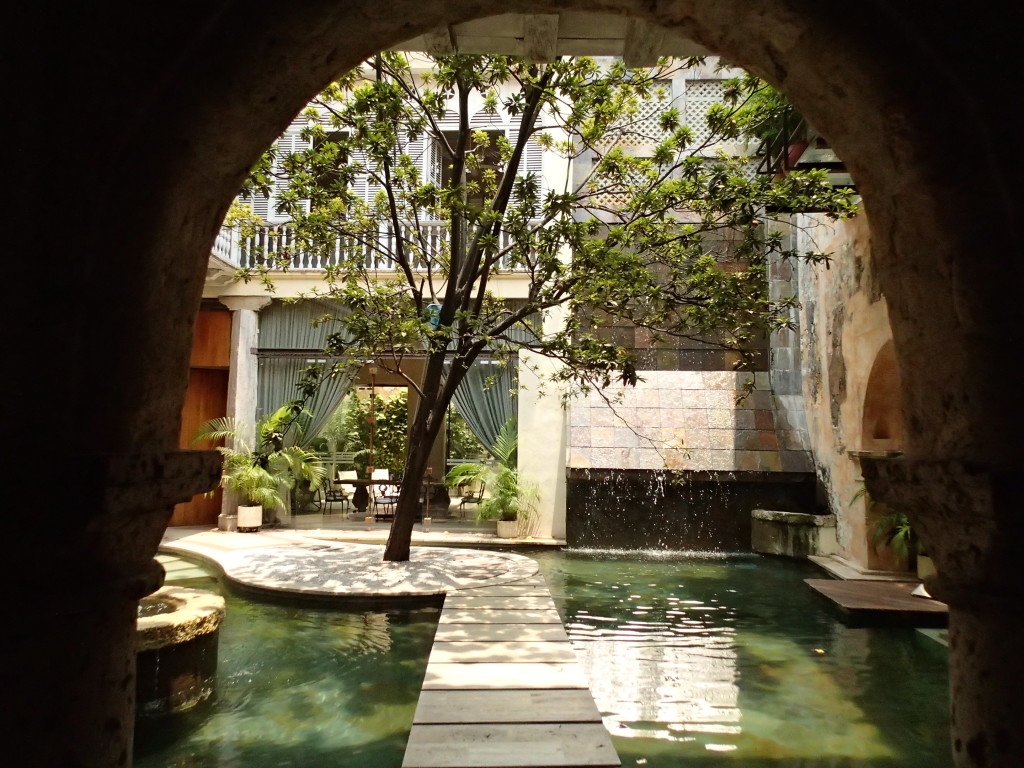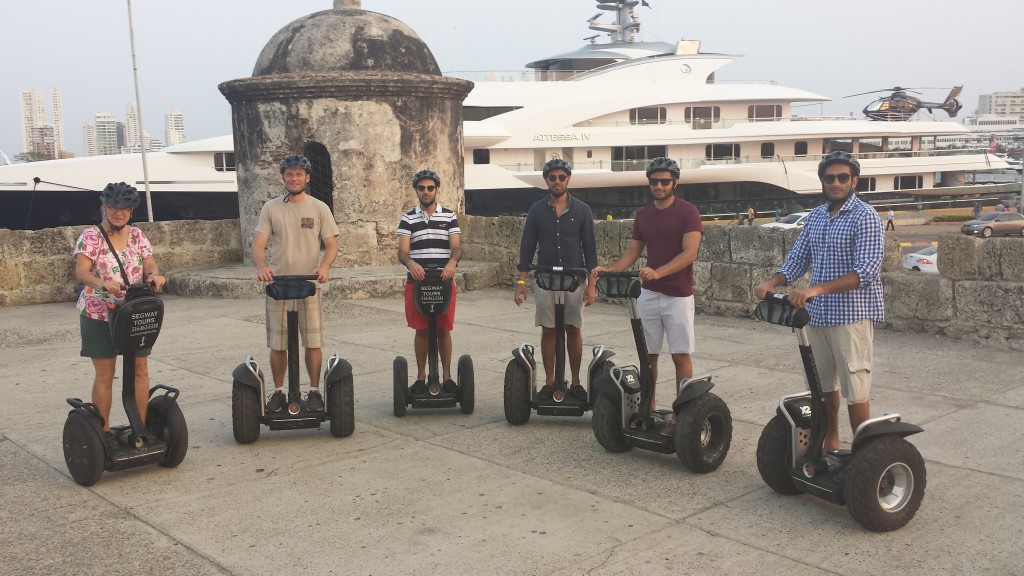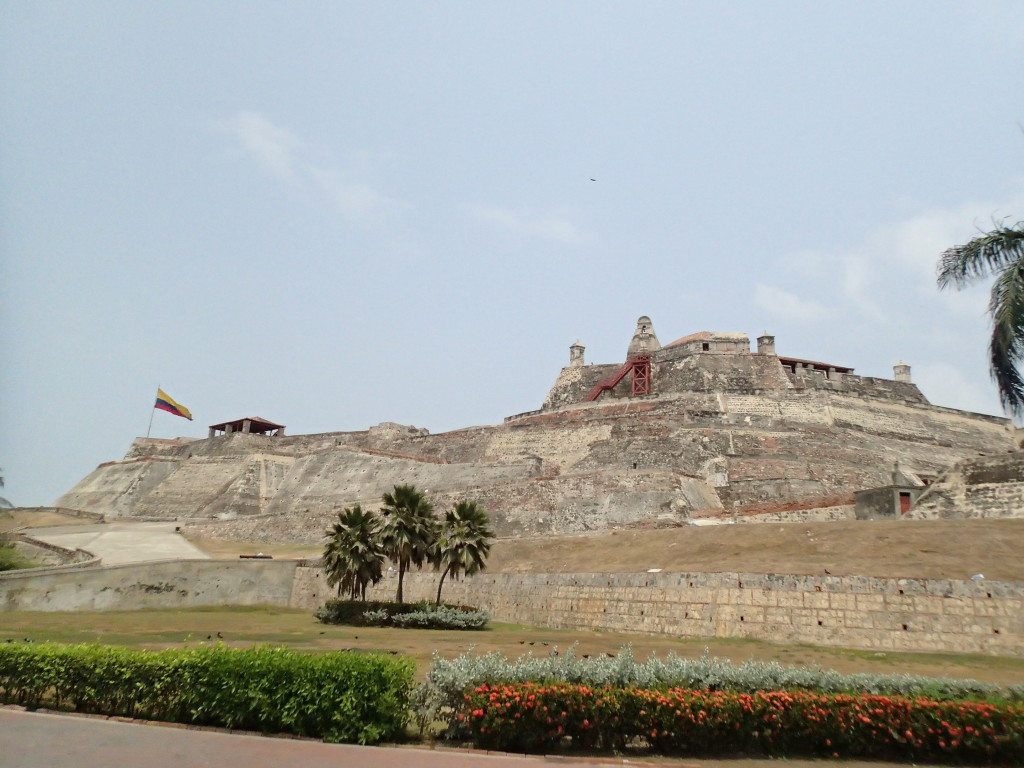I fell in love with Cartagena on my very first evening in the walled city, walking from my boutique colonial hotel to nowhere in particular, losing all sense of direction in the small streets at dusk and chancing upon little parks, churches, horse-and-carts and rows of colonial buildings that were drenched in old wealth, history and a determination to withstand the force of time itself.
Cartagena was founded in 1533 on the northern Caribbean coast of what is now Colombia, but for most of its history the Spanish northern colonies were collectively called New Granada. The discovery of nearby native American burial sites with vast amounts of gold led to rapid growth and the city’s strategic location and rare official status as a slave-trading centre meant that a lot of citizens became very wealthy. This in turn attracted the attention of many pirates and privateers and the city has been besieged, raided and plundered over and again. To stop this from happening, in the 17th century the Spanish finally decided to fortify the city in various stages and this resulted in 13 km of stone wall that encloses the city as well as the impressive Castillo San Felipe de Barajas, a huge fortress on a strategic hill overlooking and dominating Cartagena Bay, the hinterland and the sea.
The walled city is a warm, romantic, colorful, almost fairytale-like place and I enjoyed a few days just staying inside the old city, enjoying the high quality of food, the colonial architecture and the laid-back atmosphere. The city came highly recommended by my friend Luisa, a Cartagenera living in Amsterdam and she set me up with Mar, one of her friends who was happy to show me some local venues and help me practise my Spanish. One of these venues was Café del Mar (not named after her, I suspect), a bar on top of the city ramparts with a beautiful view over the ocean. Touristic, expensive, windy but well worth it.

There are many small excursions to do during the day. I suspected the beach would be great to visit but the Bocagrande beach just outside the city is surprisingly ugly and dirty. There are daytrips from the city that take you to nearby Barú or Isla del Rosario which, as I’ve been told, have beaches that do display Caribbean splendor. I opted to do a few activities in and near the walled city and they were all great except for the long run along the water on the first day for which the weather really is way too warm. There aren’t many boutique hotels with a gym in the city so if you want to stay fit you either have to suffer overheating and dehydration or stay in one of the larger beach hotels.
The Santa Clara, a 17th century convent turned into a Sofitel Legend high end luxury hotel is arguably the nicest hotel in the city but with 400 dollar per night not within my budget. However, for slightly over 100 dollar, you can take the All Day Spa package which will give you access to one of the rare gyms in the city, the large outdoor pool, a hamman and two spa treatments of choice. The hotel is beautiful from the inside so if you do not like the spa, try to have dinner in one of its restaurants.
A great way to see the walled city is by booking a Segway tour for 45 dollar. This tour takes you past all the main sights within the hour, it’s very safe in the rustic Cartagena traffic and lots of fun. It’s also supereasy to do, the Segway operates very intuitively and within a few minutes you’ll feel fully in control.

The last visit was the Castillo San Felipe de Baragas which is really a must-see as its placement and history is so intertwined with the city’s fortunes. It’s best to do it in the (only slightly) cooler morning but there are less people in the afternoon. Be sure to take the optional audiotour for 8 dollar as without it you won’t be able to understand the significance of all the defence works, the underground tunnels and the battles that were fought on its grounds.

I owe Mar and her student in Spanish Alina a big thank you for showing me part of the city and for greatly improving my Spanish conversational skills. Colombia has been an excellent finish in South America and I’ll definitely be back someday to visit some of the other cities that I’ve heard so much about, such as Medellin and Cali.
Find a local window repair service to help you fix
your broken windows. Before you employ a person 6 Irreplaceable Tips To Double Glazing High Wycombe Less And Deliver More fix your windows, make sure
they are licensed and insured. Different states have different requirements for licensing.
There are many treatment options for Gambling – Martins-Tavern.Com, addiction.
One-on-one counseling or medication, lifestyle changes, and medication are all choices.